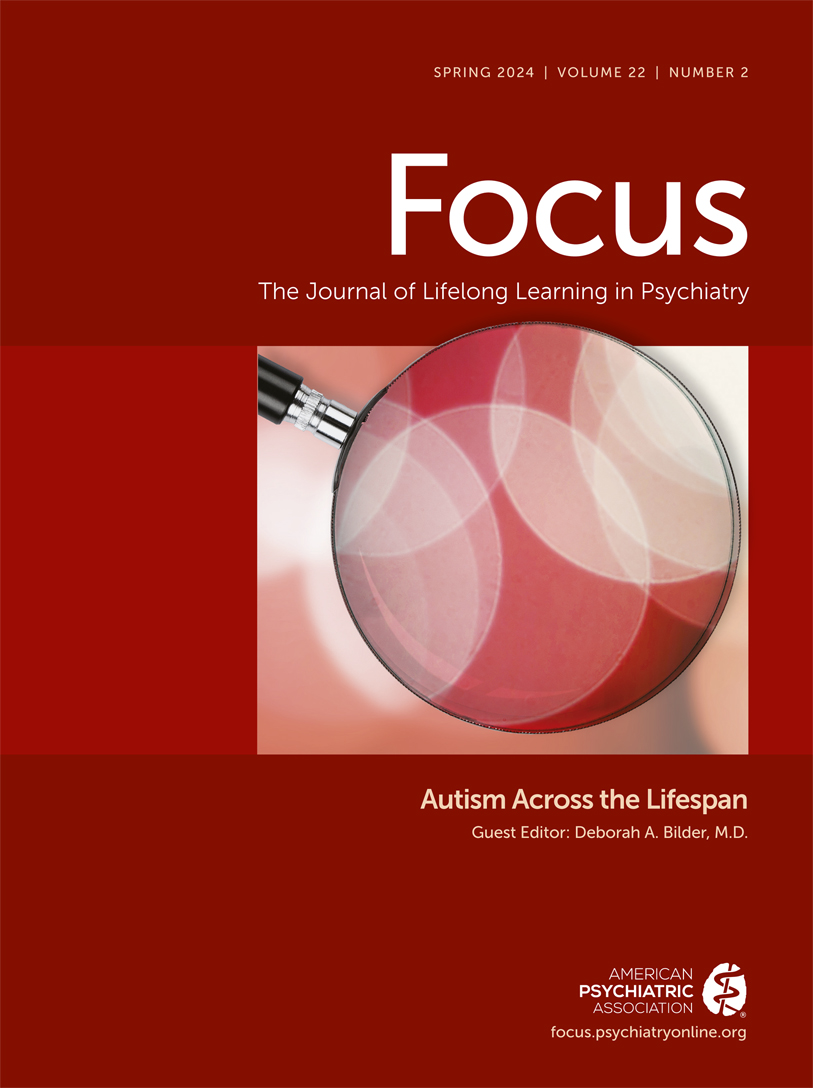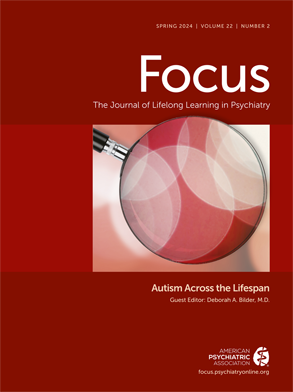Clinical Vignette
Joanne Brooks is an 18-year-old high school senior who receives special education under the category of autism. She is accompanied by her mother for her first appointment with Dr. Gomez due to symptoms of anxiety that have made it difficult for her to go to school, go to new places, and manage frustrations. She has increasingly experienced “meltdowns” when she feels overwhelmed, which includes bursting into tears at school and yelling or banging things at home—she has even hit herself in the head several times and, in her exasperation, said she wished she were dead.
Joanne’s mother forwarded her psychoeducational evaluation from the school to Dr. Gomez prior to the appointment. Results suggested that Joanne has a complicated learning profile, with above-average verbal skills, nonverbal skills in the low-average range, and very low processing speed. She was given a diagnosis of autism at the age of 7. Joanne has always received her education in mainstream classes with supplemental resource room educational support, social skills group, and speech therapy. She takes her academic studies seriously and is a determined student, albeit taking much longer than her peers to complete her work. She has always struggled with socialization but has several good friends with whom she shares her special interests in anime and drawing. She is active in an online group of neuroatypical teens who share their struggles and lament the medicalization and stigma of their autism diagnoses.
Dr. Gomez smiled warmly at Joanne and her mother when she met them in the waiting room.
“Please come in,” Dr. Gomez said. When Joanne and her mother were seated in the office, Dr. Gomez spoke to Joanne directly. “Before we get started, I would like to discuss our work together and inquire how I can be helpful. First, what name and pronouns do you prefer?”
Joanne looked somewhat surprised but smiled. “You can call me Joanne, and my pronouns are ‘they, them.’”
Dr. Gomez nodded and did not look away when Joanne peered anxiously at her mother. “OK. You are an adult and what you share with me is confidential unless there are concerns about your safety. How can your family be helpful and how would you like them involved?”
Joanne looked at her mother and said, “She knows me, and I want her to help with decisions, but I want to have the final say. I’ll let you know if there is something I don’t want my parents to know.”
Dr. Gomez nodded and continued, “You have been diagnosed with autism. Some of my patients prefer to be referred to as a person who is diagnosed as having autism spectrum disorder and some patients prefer to be referred to as an autistic person. Or sometimes neuroatypical or neurodiverse. Have you ever considered that?”
Joanne smiled more broadly now and almost yelped, “I can’t believe that you know that! I consider myself proudly neuroatypical,” Joanne announced.
Dr. Gomez smiled. “Joanne, may I ask your mother some questions before we meet privately together?
“Sure,” Joanne replied. “Joanne, please stop me if there are questions you aren’t comfortable with,” Dr. Gomez said, and turned her attention to Joanne’s mother. “Ms. Brooks, how do you think I can be helpful to Joanne?”
Joanne’s mother described wanting Joanne to be happy and in control of her emotions. She hoped that Dr. Gomez could help her to understand Joanne’s distress, how easily she becomes overwhelmed, and how the family can help her. Adding to the conversation, Joanne described fears about her upcoming graduation and deciding what she would do next.
“I don’t do well with new things,” Joanne acknowledged. “I have my friends and the teachers I like and…I might lose all of that.”
Joanne and Dr. Gomez met individually and reviewed her symptoms, her strengths, and her goals for her work with Dr. Gomez. She hoped for help with her anxiety and “meltdowns.” She hoped not to be “labeled,” or to experience attempts to “cure” her autism. She wanted to find ways to make her neuroatypicality an asset. She hoped to have her parents accept her “nonbinary” and “neurodiverse” identity. She did not endorse suicidal ideation or intent or other safety issues.
At the end of the session, Dr. Gomez summarized. “Let me review my assessment and recommendations. You have all of the symptoms of an anxiety disorder. For all of us, when we get too anxious, we get overwhelmed, and the thinking part of the brain shuts down. We go into ‘fight, flight, or freeze’ mode. Have you heard of that before?”
“Yes. We talked about that in my psychology class,” Joanne noted.
“You have a lot of stress this year,” Dr. Gomez said, “with graduation coming up and the changes that will bring. You are anxious, become overwhelmed, and have meltdowns. This is more common when you are neuroatypical—as you said, change is hard.”
Joanne nodded in agreement.
“I have four recommendations that you can consider,” Dr. Gomez continued. “Let’s discuss and plan next steps. Then, can we call your mother in to review?”
“Sure,” Joanne agreed.
“I am glad you came in. What you are going through is common and there are ways to help. First, I think you will benefit from therapy to help with your anxiety. Second, having some meetings with your parents, as well, can help them to understand and support you. Third, I know of a new group that is starting comprised of teens and young adults who are struggling with similar issues of transitioning to adulthood. You can work through some of these issues with others who are going through the same thing. And last, there are medications to treat anxiety. They don’t work immediately, but they can be very helpful in lowering your overall anxiety so that you don’t go into ‘meltdown’ mode.”
When they had agreed on the plan, Dr. Gomez went to her computer and typed out the recommendations, with referrals. They discussed the plan with Joanne’s mother and set up their next appointment to consider medications.
As Joanne and her mother stood to leave, Joanne looked Dr. Gomez in the eyes for the first time and said, “You’re cool. I think you get me.”

